[/caption]
The transit of Venus across the face of the Sun — the last one for another 105 years — has begun! Here are some first images from various astrophotographers, telescopes, space missions. This first one comes from amateur astronomer Jason Melquist from Minneapolis, Minnesota USA taken just as Venus began its ingress into the Sun’s interior face.
See more below, and we’ll be adding images as they come in! And if you aren’t watching our live webcast, see it here.
This image from the Solar Dynamics Observatory has a definite ‘WOW!’ factor, with huge coronal loops just under Venus transiting the Sun:
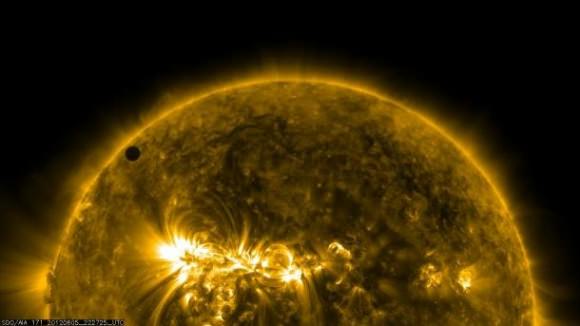
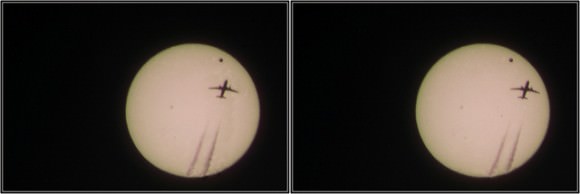
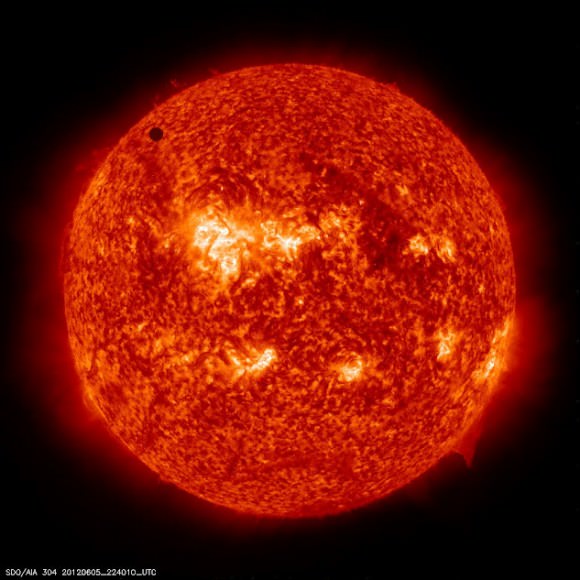
This one comes via Camilla SDO, the fearless mascot of the Solar Dynamics Observatory, who says of this image taken in 304 Angstrom wavelength, “This channel is especially good at showing areas where cooler dense plumes of plasma (filaments and prominences) are located above the visible surface of the Sun. Many of these features either can’t be seen or appear as dark lines in the other channels. The bright areas show places where the plasma has a high density.”
Below is a quick first movie from SDO of Venus’ ingress in 171 Angstrom!
And here’s SDO’s first “official” image of the transit, in 171 Anstrom wavelength:
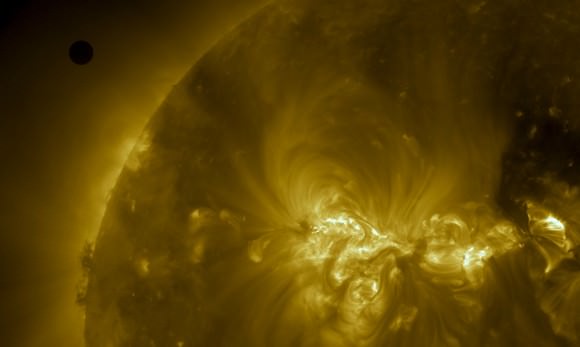

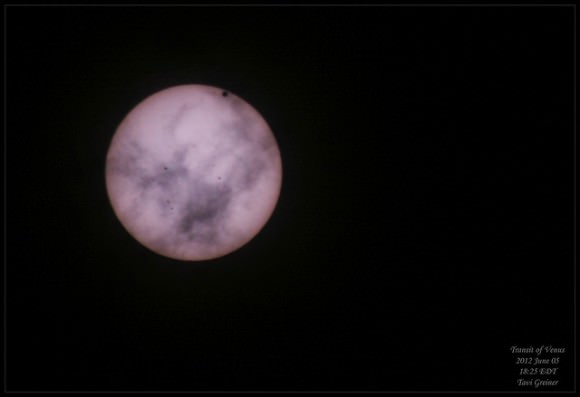
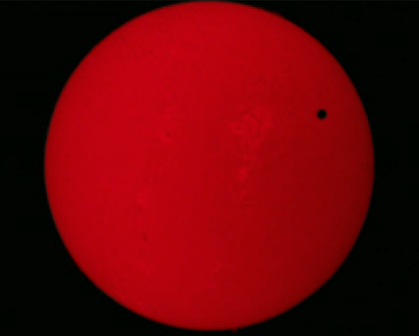
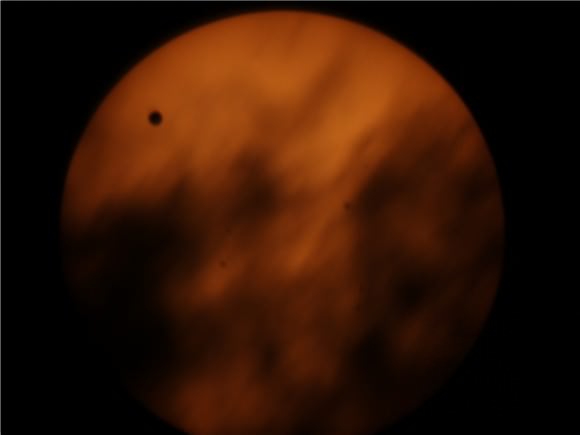
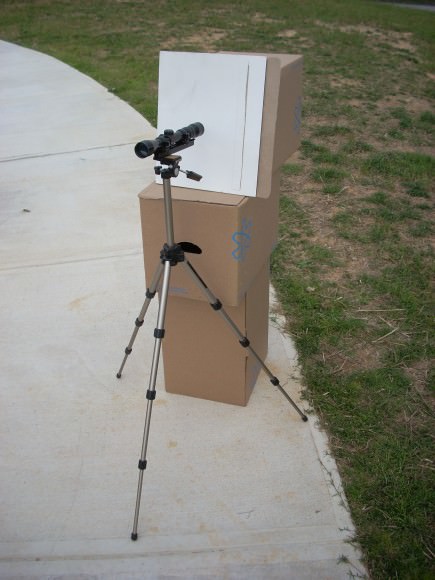
Jeremy Smith from Atlanta Georgia sent us views of his setup for ‘safe’ viewing of the transit. “My safe viewing rig is composed of a cheap tripod, a faulty rifle scope, three FedEx boxes and a FedEx mailer,” he said. “I got to see it with my daughter at home but we lost it behind the trees. We hightailed it to the local park but by the time we got there, it was a wash. We lost it behind clouds. The pictures of the transit didn’t turn out very well though. But I saw it!”
His view, below:
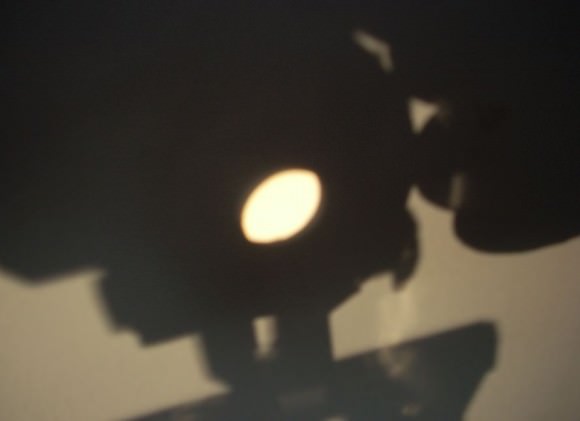
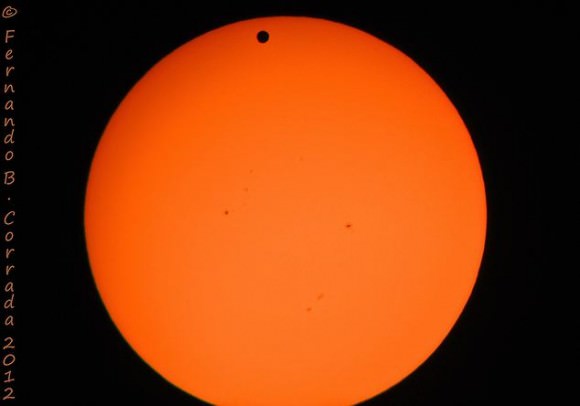
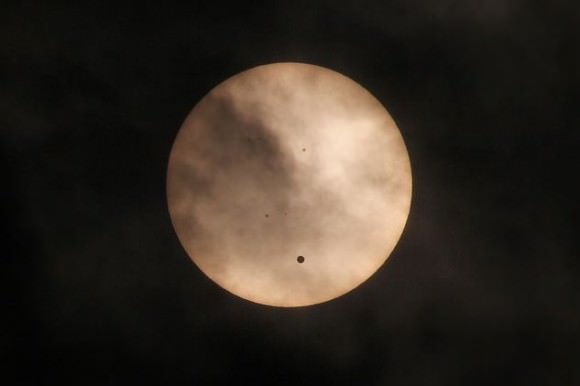
Want to get your Venus Transit image featured on Universe Today? Join our Flickr group, or send us your images by email (this means you’re giving us permission to post them). Please explain when you took it, the equipment you used, etc.

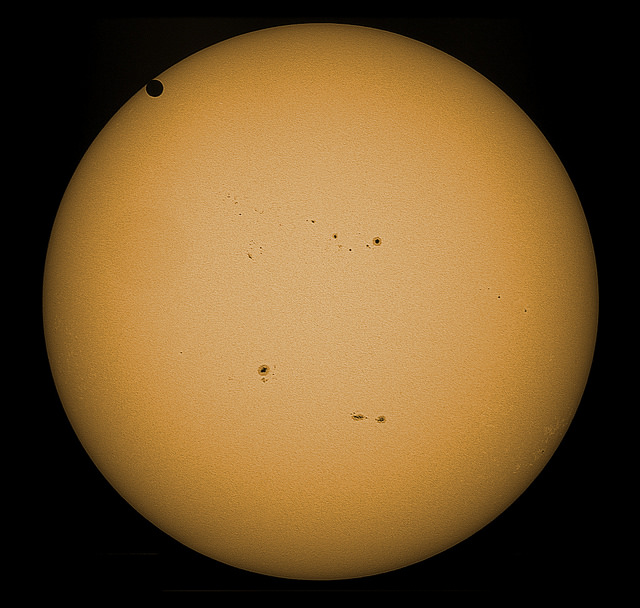
Theres some great shots here. Wish I could’ve seen it myself.
CLOUDS! CLOUDS IN THE WEST! STUPID PITTSBURGH WEATHER HATES ME, I SWEAR!
my roomate’s ex-wife got paid $15158 the prior week. she is making an income on th e laptop and got a $584800 home. All she did was get fortunate and set to work the advice shown on this web site
?????? (Click At My Name For Link)
my roomate‘s sister makes $82/hour on the laptop. She has been out of work for six months but last month her check was $19771 just working on the laptop for a few hours. Read more on this site
?????? (Click At My Name For Link)
Weather was so clear on Big Island, Hawaii along the North Kona Coast. Exterior ingress occurred with Sun near the zenith. Very stable air made for great visuals through my 4″ refractor, but not so good on the neck. 3rd/4th contact was near Sunset. Unstable air made higher magnifications impossible. Quite a memorable day.
Enjoyed the queue of people, especially the young children wanting a look in the telescope, each uttering “wow” etc.
I got some good looks at this with my 6″ refractor. I had some people walk by an wonder what I was looking at in the broad day light. I let them look and explained what was going on. Some people had not heard of this. I explained how the observation of the transit was used as a parallax to compute the size of the sun, Earth’s distance from the sun and the scale of the inner solar system. The transit of Venus in 1769 was back then equivalent to the CMB anisotropy measurements or the goal of actually imaging the “blackness” of the galactic black hole.
LC
amazing, makes me look at the solar system with awe